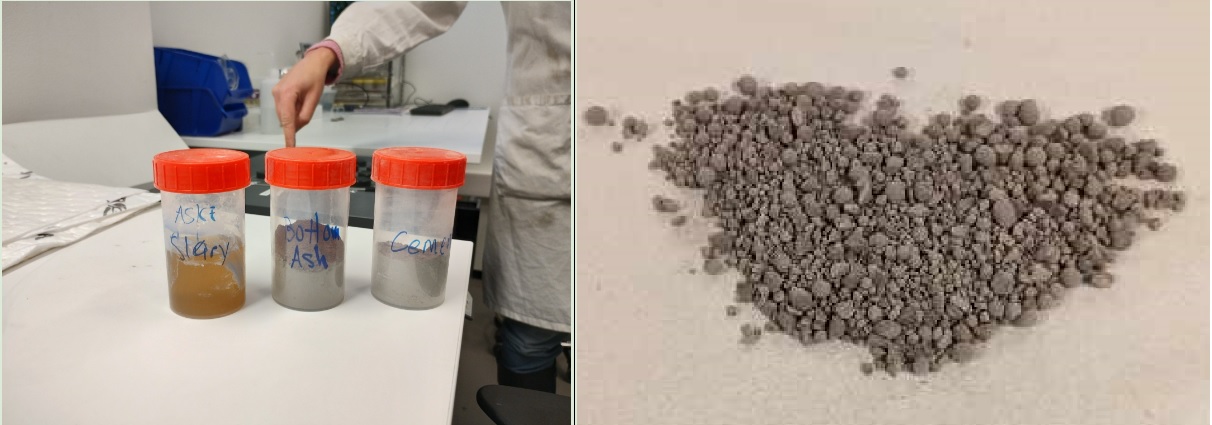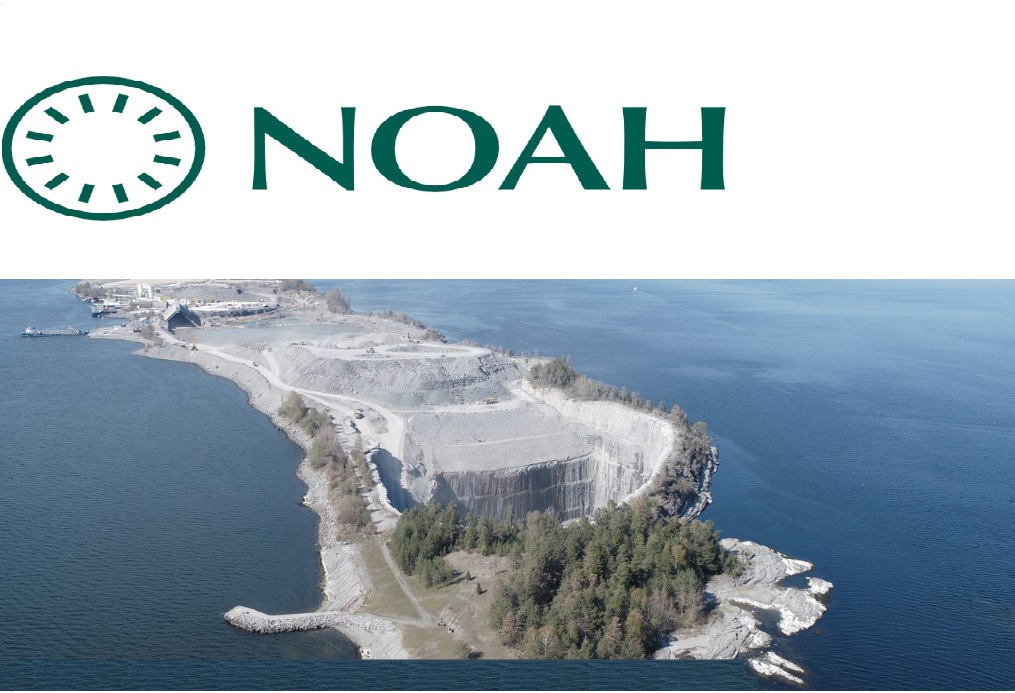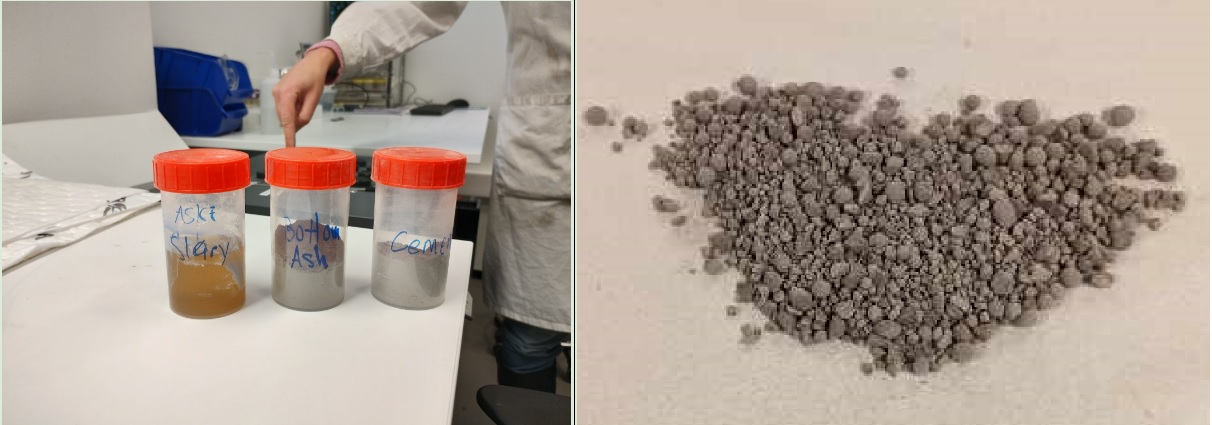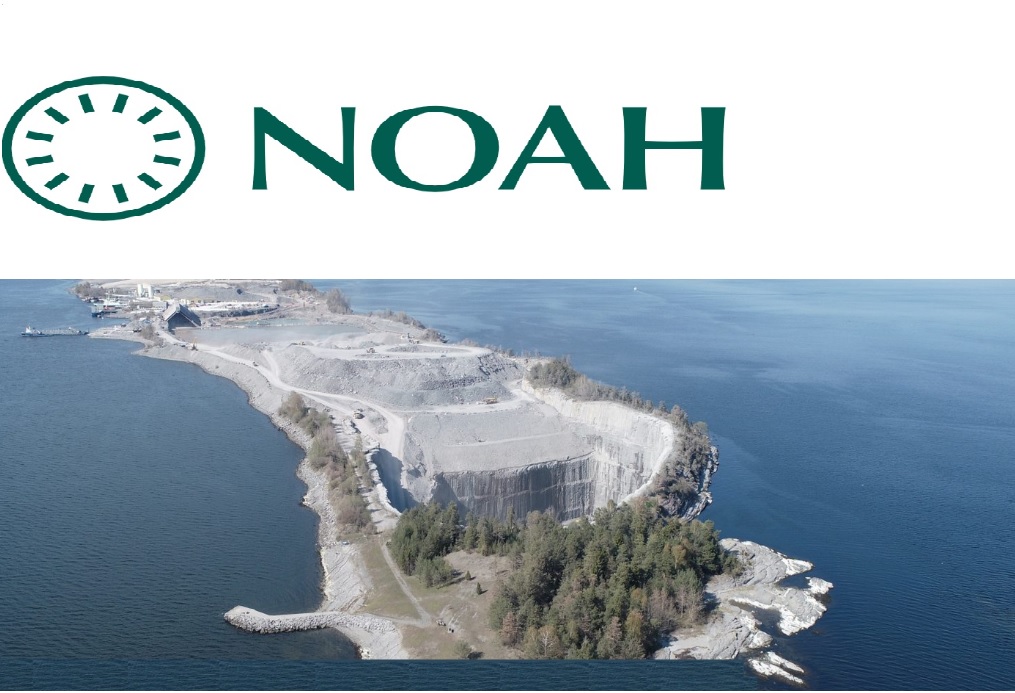Om prosjektet
The research paper will explore the feasibility of producing a granule of alkali-activated artificial aggregates(geopolymer) from industrial by-products like flyash, bottom ash, sulfuric acid and activators like water or Alvaaske. Then it determines the produced sample’s environmental impact, geotechnical properties, and economic viability for incorporation or as a replacement of natural aggregates. Further using different approaches and methods the study tries to find the most effective precursors that would result in an environmentally and economically viable product.
We will apply several approaches to achieve the desired outcome, in the first approach for example, we will partially replicate the research done by (Wyrzykowski et al, 2023) but using filter-cake(gypsum) provided by NOAH instead of biochar, whilst keeping Portland cement and water. The second approach will involve replacing water with alkaline activators such as Alvaaske and replacing cement by Bottom ash. Previous Studies done on replacing cement with bottom ash or fly ash have shown promising results (Boyu. Chen et al, 2023; A.M. Joseph, et al, 2021; N.M. Alderete, et al). A study done by our research partner NOAH using a 10% cement to 90% filter-cake ratio was successful, therefore we will use the samples created in this approach as a reference or guide for the sample characteristics we are looking for. Similarly, in the next stages, we will implement other approaches that are necessary to achiev the desired result.
This research product needs to fulfill environmental requirements, also it must be economically viable during production and the final product must have competative price range.
Bilder:
- Experimentation work at the HIØ Labratory.
- Employer logo and facility at Langøya.
Prosjektdeltakere
Abel Daniel Gebremichael, Tomas Richard Keenan, Mia Sofie Bjørnholm
Om oppdragsgiveren
NOAH was established in 1991 by the government and other actors to treat inorganic hazardous waste from industries, as discharge to nature was no longer acceptable. Since 1993 NOAH has been ensuring that industries avoid pollution. Today NOAH is a privately owned company.
NOAH's core task is to receive, process and properly store inorganic surplus masses, for example NOAH treats about 30,000 tons of fly ash per year, it also accepts and treats chemicals such as spent sulfuric acid.
NOAH is considered a socially critical actor because parts of Norwegian industry and Scandinavian energy recovery depend on it. NOAH plays a role for Norway to fulfill the premise of the government's non-toxic circular economy strategy.
Currently NOAH is focusing more on reuse and recycling, one such example is using fly ash or bottomash and Sulfuric acid to produce gypsum, further the gypsum produced is used to rehabilitate old limestone quarry at Langøya in Norway, but this land reclamation work will end in 2034.
Beyond this NOAH wants to explore other ways to use the gypsum, one such concept is in production of artificial aggregates to be used in the construction industry, which this research project is trying to prove.
Veileder
Susana Garcia Sanfelix, Høgskolen i Østfold
Inge Johansson, NOAH




